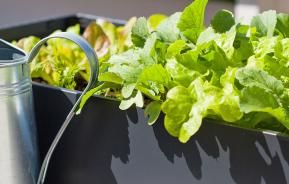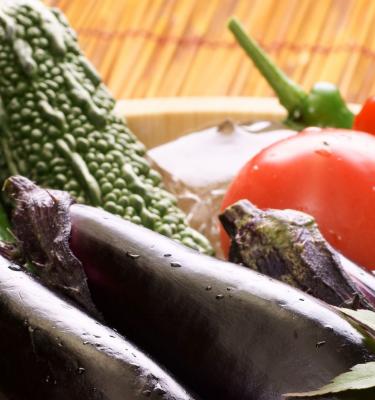
Our Top 5 Summer Vegetables To Grow In Your Garden
5 Summer Vegetables Perfect For Australian Gardens
Growing your own veggies is one of the most rewarding hobbies to take up. It’s the best way to enjoy healthy, fresh food, and can save you money along the way too. Follow our guide to growing vegetables in the summer, as we take you through how to grow some of our favourites, no matter which part of Australia you’re in.
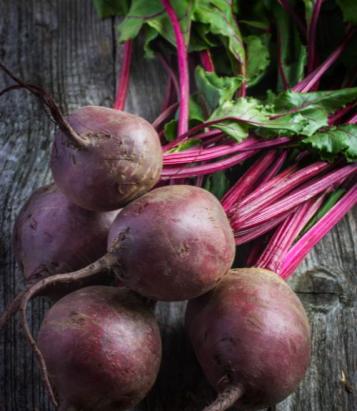
#1. Beetroot
This taproot plant grows well owing to its ability to store energy and moisture in its large underground root. Beta vulgaris are traditionally grown in rows on a veggie patch, where the dark purple foliage contrasts beautifully against the tops of carrots, potatoes and other familiar vegetables. Beetroot also isn’t a fussy grower, although prefers partial shade and will need some watering in very arid conditions.
Shop-bought beetroot are usually purple, but growing at home means that you can try more interesting cultivars. Yellow, white and stripy red-white ones are available – they also look great roasted.
Boil or roast whole beetroot and eat warm, or allow to cool, slice it and dress in a light vinegar. Young leaves can also be eaten, added to salads or omelettes. The dark purple roots and broken leaves have an extraordinary ability to stain anything they touch, so wear gloves and an apron when handling, and promptly wipe down any surfaces the beetroot has been in contact with.
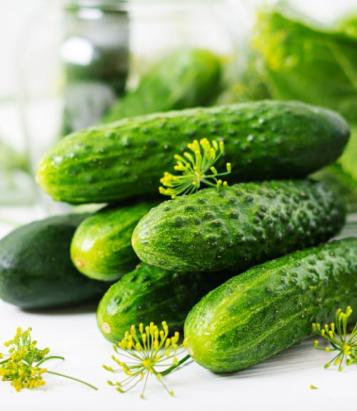
#2. Cucumber
Refreshing and crisp cucumbers are deliciously picked from your own garden and are a delight for honey bees, which enjoy foraging on the flowers. You should sow seeds of Cucumis sativus in mid-spring, and once large enough to handle, pot up into Scotts Osmocote® Tomato, Vegetable & Herb Potting Mix. Plant out into borders in late spring or early summer. This sprawling vine plant will benefit from supports to climb up, so if possible provide a structure for it to wrap its tendrils around.
Add slices of cucumber to a jug of ice-cold water for a reviving summer drink or make a simple salad by adding diced cucumber to a bowl of tomatoes and olives, and gently dressing with light balsamic vinegar. For something slightly unusual, try smacked cucumbers as an accompaniment to a spicy dish - use a rolling pin to split and squash the cucumber into uneven bite-sized clumps, and toss together with crushed garlic, soy sauce, sesame seeds, and rice wine vinegar.

#3. Eggplant
Delicious in a roasted vegetable summer salad, this purple or sometimes cream-white fruit, is an attractive plant worthy of any garden. It can be grown in open ground in a vegetable patch, or planted towards the front of a flower border where the developing fruits will be a great talking point. Eggplant, also known as aubergine, brinjal or Solanum melongena, can also be planted out in containers, although pot grown plants will need lots of water and nutrients - add Scotts Osmocote® Tomato, Vegetable & Herb Potting Mix prior to planting.
Eggplant needs a good stretch of warm weather, so sow seeds early in the growing season, and expect to pot up several times before planting out. Place them in a sunny location away from wind, where pollinators can easily reach their purple-white flowers. Harvest when the white or purple fruits are shiny, usually 5-6 months after sowing. As well as being delicious roasted and added to salads, they’re great sliced and barbecued, and served with a yoghurt and garlic dip.
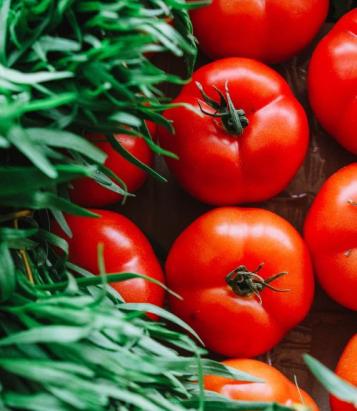
#4. Tomatoes
A versatile crop, the fruits of Solanum lycopersicum come in all manner of shapes, sizes and colours. If you have the space, choose a mixture of red, orange, yellow, green and black tomatoes, to create delicious vibrant salads. Tomatoes pair well with basil and garlic, but can be added to pretty much any savoury dish.
Sow seeds in early spring, and once seedlings have two leaves and are large enough to handle, move to a larger pot. Bury the stalk beneath the soil so that only the leaves are on top of the potting mix. Keep doing this until late spring, when they can be planted out into the garden, making sure to enrich the soil first with Scotts Osmocote® Plus Organics Tomato, Vegetable & Herb Plant Food & Soil Improver. Bush tomatoes are easy to manage and can be left to their own devices, whereas upright varieties need support by being tied to a cane and having side shoots removed regularly. Water in dry weather, and feed with Scotts Osmocote Pour+Feed Tomato & Herb. Harvest tomatoes when the fruit and its calyx (the dark green spider-like stalk on top) easily snap away from the plant.
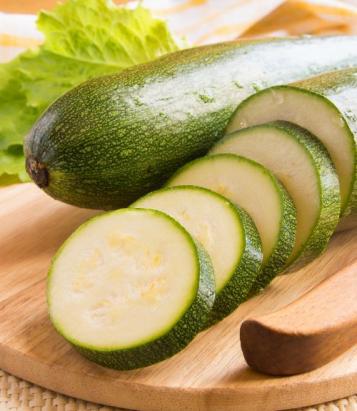
#5. Zucchini
Cucurbita pepo – also known as courgette and sometimes baby marrow – is a prolific producer, and you can expect to harvest new zucchini every 3-4 days. Choose from dark or light green, stripy green, and yellow types.
Buy and sow fresh seeds in mid-spring, and plant out once there are 3 leaves on the plant. They are best grown in the open as they need bees to pollinate the flowers. Protect from slugs and snails until they are well established. Water in dry weather and keep the crops coming by feeding with Scotts Osmocote® Controlled Release Fertiliser: Tomato, Vegetable & Herb.
Harvest when about 20cm long, or longer if you want to grow marrows for stuffing. Zucchini will absorb the flavours of other ingredients cooked with it, so is great for bulking out pasta dishes, curries and chillies. Try dicing the zucchini and fry in olive oil until gently browned, then add to a pasta dish with fresh basil, toasted pine nuts and crumbled feta cheese. Do not eat the zucchini if it tastes extremely bitter. The flowers of zucchini can also be eaten - dip in a light tempura batter, and lightly fry.






